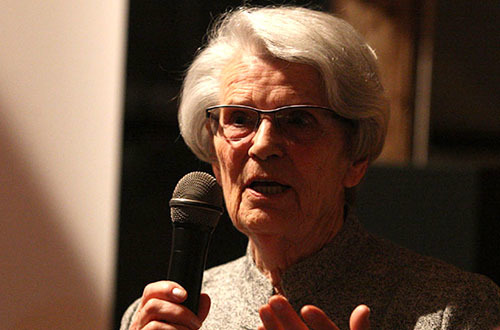01|05
Tuesday, Interview of the day
We present an excerpt from an interview with Libuše Čihařová Memories of the Craft and its Masters recorded by the then student Jan Bohuslav, now graduate, of the Film and TV School of the Academy of Performing Arts in Prague (FAMU) for his master’s thesis Animation Oeuvre of Libuše Čihařová.
Have you ever adapted an art style that proved hard to animate?
"That has never happened to me. The directors wouldn’t allow it. They always picked artists who were easy to work with and whose art style suited the animators. Sometimes, the director would change the art style a little bit to fit the animation. For example, the design of Maxipes Fík was altered. The character looks different in the book."
Did you have your own art style before you started drawing for the Bratři v triku animation studio?
"Of course, but I gradually lost it. Animators and graphic designers have to constantly adapt their styles to other people’s art styles. You have to think and draw like another artist. It’s one of the things an animated film’s success depends on."
You started out in a group of animators with Zdeněk Smetana. What was it like to work with him?
"Fantastic! Not only did Zdeněk Smetana teach me more about animation than anyone else, but he is also responsible for my developing a lifelong passion for hand-drawn animation."
Unlike Smetana, Václav Bedřich picked a different artist for each of his films. Was that interesting for animators?
"Above all, it was refreshing. If we had worked like Disney and kept doing the same types for 25 years, it would have got too boring, and I think we wouldn’t have stayed at Bratři v triku."
Which of Bedřich’s professional qualities did you appreciate the most?
"I admired his impeccable organization of work, excellent sense of timing, and knack for structuring stories."
Which other directors do you remember fondly?
"Jiří Brdečka and Gene Deitch. Mr. Brdečka was very sophisticated and well-mannered. He commanded respect but also radiated kindness. Brdečka was well-rounded and very versatile, and I admired his perfectionism, which he also demanded from everyone else. But he demanded it in such way that everyone was happy to oblige. I took great pains to ensure he was satisfied with my work. And he also always picked interesting artists and musicians."
Which of Gene Deitch’s films do you like to think back on?
"The Pig’s Wedding, for example. I was mainly in charge of animation preparation. Doing that, you get to work more closely with the director and get the chance to understand them better."
In the 1980s, production targets were introduced in the animation studio. How did it affect your work?
"When we were working on Bedtime Stories, we were paid by the metre. That is depending on the length of film we managed to animate. Animators were ranked by performance. What’s more, the Czechoslovak Television had less and less money and our wages kept shrinking. And it was hard to keep to the budget."
You taught at FAMU for many years. What are the main differences between making an animated film at school and in a professional studio?
"People who joined the Bratři v triku studio had to start from scratch. Graphic designers gradually became animators, and in time, animators became directors. We worked on everything as a team. There were hardly any author films. At school, every film is an author film. I always secretly wished students would be required to make at least one film in a team because it would help prepare them for their professional careers. After graduating, most students don’t start working as individual filmmakers but rather join some studio."
